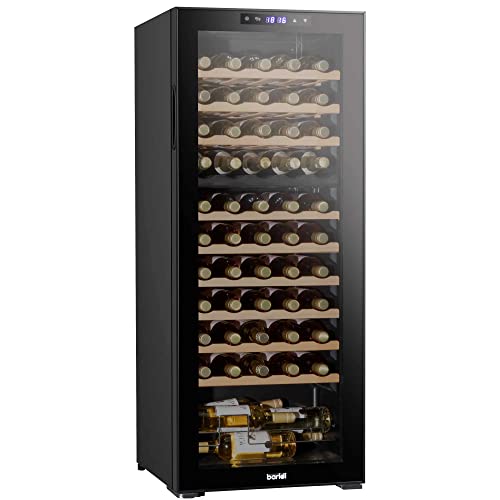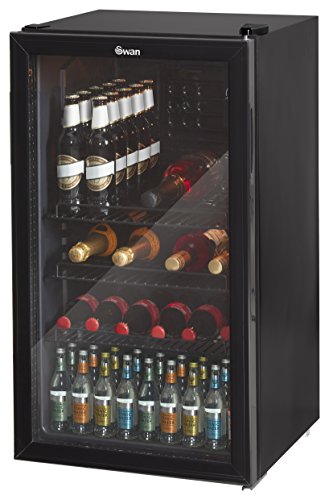You'll Never Guess This Wine Refrigerator Built In's Tricks
페이지 정보

본문
 Energy Efficient Wine Storage With a wine refrigerator built in [yogicentral.Science]
Energy Efficient Wine Storage With a wine refrigerator built in [yogicentral.Science]Keep your wine at optimal temperatures for serving or long-term storage with this energy efficient built-in compact wine fridge refrigerator. Dual temperature control zones allow you to keep white and red wines separately to preserve their full flavor.
 These units are designed to blend seamlessly into your cabinetry. They can be installed beneath countertops to give you easy access to a refreshing Riesling glass after dinner. They require adequate ventilation and clearance to dissipate the heat.
These units are designed to blend seamlessly into your cabinetry. They can be installed beneath countertops to give you easy access to a refreshing Riesling glass after dinner. They require adequate ventilation and clearance to dissipate the heat.Capacity and Size
A wine refrigerator built in provides a sleek and stylish alternative to bulky freestanding units. With front vents, these wine coolers can be recessed into counters or cabinets to create a seamless design. These wine coolers are more versatile, allowing for the storage of cold beverages and wine.
With capacities that can reach 368 bottles These wine refrigerators are designed for serious collectors with substantial collections. They focus on storage capacity as well as precise climate control to ensure that your wine is protected over the long run. These units are great for garages, basements, or areas that are not conditioned, in which a more durable storage environment is needed.
The cooling capacity of the wine fridge is typically measured in terms of the number of standard Bordeaux-style bottles it can hold. It is also important to consider whether your collection of wine includes other sizes of bottles, like Champagne or Burgundy. This will impact the capacity of your bottle, since these bottles require more space than the Bordeaux standard bottle. Some wine fridges have adjustable shelves to accommodate different bottle sizes.
You'll also need to think about the best location for it. If you intend to install it inside existing cabinetry, you will require 6 inches clearance from the rear and on both the right and left side. This allows the heat generated by the wine refrigerator to escape, and also prevent overheating.
Consider installing one of these top-of-the-line wine fridges to your kitchen if you're looking to splash out on a premium model that has an exquisite stainless finish. With their sleek and stylish doors they are the epitome of luxury and will create an impressive piece of furniture to your home. These refrigerators are also available in larger sizes and are ideal for those who enjoy hosting large parties and gatherings. These wine refrigerators come with many features like dual-zone cooling and UV protection, as well as numerous other options.
Ventilation
If a wine refrigerator isn't properly ventilated, hot and humid air will build up inside and the refrigerator could overheat. Ventilation ensures that the cooler is at an ideal temperature and humidity level that is optimal and protects against variations in temperature that could harm bottles or change the taste of wine. Examine your wine refrigerator after it has been running for a couple of minutes to ensure it has the right ventilation system. If the fridge feels cool to the touch, then it has adequate ventilation.
Most wine fridges have an internal temperature sensor which monitors the temperature inside the cooler and alerts you if it is out of the range. Some models have dual temperature-controlled zones to allow you to store different types of wines at ideal serving temperatures.
The ideal temperature for storing wine is between 55 and 66 degrees Fahrenheit. This is to avoid the growth of cork rot, or other issues that could damage your valuable collection. Some models have a light that will light up when the temperature inside is below the desired temperature.
Based on your storage needs depending on your needs for storage, a built-in wine refrigerator could be the perfect option to accommodate your entire collection. They can be placed effortlessly under countertops in kitchens or in bar areas to offer guests with an easy access. Some models offer front ventilation so they can be installed flush with your cabinetry for sleek appearance.
It is crucial to take measurements of the space and into consideration the cabinet's size prior to installing a wine refrigerator. To ensure proper airflow, the refrigerator must be placed at least just a few inches away from all walls. If a wine fridge is pushed against a wall or another cabinet, it may block the vents and block heat from venting. Freestanding wine refrigerators feature rear or side vents that allow for the dispersal of heat efficiently.
Installation
A wine fridge built-in can be a stylish and useful addition to your bar. When you are deciding on the best location for your new appliance you must keep certain things in your mind.
First and foremost, make sure that your new cooler has adequate space to ventilate. If a wine cooler is not properly ventilated, it will heat up and eventually reduce its lifespan.
In addition, you should keep your wine refrigerator out of direct sunlight and other heat sources. This will protect your collection from damaging ultraviolet rays from the sun and let it cool efficiently.
Lastly, make sure your wine refrigerator isn't too close to another heating appliance, such as a dishwasher. This could cause your wine to be damaged or have unpredictability temperature fluctuations.
Wine refrigerators are available in two varieties that are built-in and freestanding. While freestanding wine refrigerators are more flexible in terms of the installation options and features, built-in units provide seamless integration into your kitchen cabinetry. Both are available in various sizes and styles, so you can find the perfect fit for your home.
In order to ensure your new wine refrigerator is able to effectively ventilate, measure the space where you plan on installing it. If you can you could leave a few inches of clearance around the unit to allow for ventilation. Be sure that the door is able to be fully opened as well. If it isn't open, the racks in the interior will be difficult to access.
Some models also have specific temperature preferences. For instance, certain wine refrigerators may keep red wines at an optimal serving temperature of 55 degrees Fahrenheit, while others might be suitable for storage that is long-term. You may want to purchase a dual zone wine refrigerator depending on your needs. This allows you to keep long-term wines chilled and serve chilled drinks in another zone.
If you're planning to put in a narrow wine refrigerator refrigerator built in it, make sure you've read the manufacturer's instructions carefully to ensure that your new cooler is correctly installed. After the cooler has been moved in the refrigerator, you need to wait a few hours before turning it on so that the coolant has time to settle.
Energy Efficiency
In a time when energy is costly it is essential to think about the energy consumption of appliances. When you are buying a built-in wine fridge look for models with an energy efficiency rating or Energy Star certification. This indicates that the wine fridge has been constructed with the most advanced cooling technology and insulation to help conserve energy.
A wine cooler fridge refrigerator has to cool the entire interior as well as the bottles stored within. A larger wine fridge that has a greater capacity bottle will consume more energy than a smaller model. Also, the ambient temperature of the room can affect the power consumption of the fridge since it has to work harder to maintain a cooler interior.
To decrease the amount of energy consumed by your wine fridge, ensure that it is always fully stocked. This may sound counterintuitive, but a wine refrigerator that is filled with sealed, cold bottles won't need to work as much to maintain its internal temperature. Maintaining your shelves and bottles in a proper arrangement can help your wine fridge run more efficiently. For instance, placing your bottles horizontally will enable them to chill faster than if they're arranged upright.
Another way to cut down on the energy consumption of your wine fridge is to choose a new model that features advanced cooling technology. The most recent models are more energy efficient than previous models and could save you as much as PS100 per year on energy costs.
When shopping for a new wine chiller uk fridge, select one with a low-energy compressor cooling system. This kind of fridge is more environmentally friendly and uses less power than wine fridges that have a high-energy compressor system. Also, think about a thermoelectric wine refrigerator. These wine coolers utilize a Peltier effect to cool the interior of the fridge, and consume significantly less energy than compressor-based units. They are more sensitive to temperatures and require more regular maintenance. Choose a brand with an established track record of making reliable high-quality wine refrigerators. They'll likely make the best wine refrigerator refrigerator that is energy efficient with a cooling system and a quiet operation.
- 이전글Diagnose ADHD: 10 Things I'd Love To Have Known Earlier 24.09.21
- 다음글Guide To Asbestos Attorney Mesothelioma: The Intermediate Guide For Asbestos Attorney Mesothelioma 24.09.21
댓글목록
등록된 댓글이 없습니다.